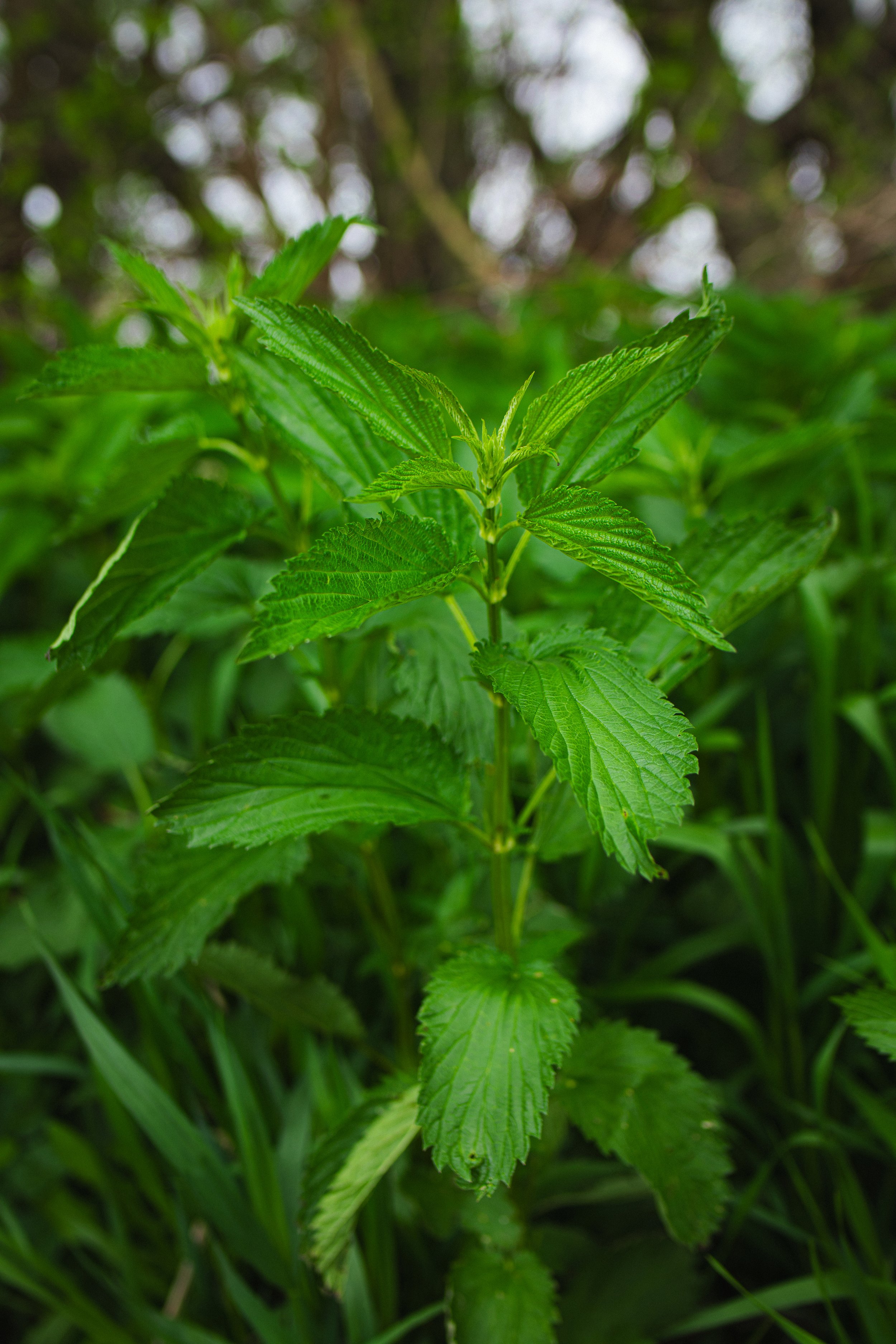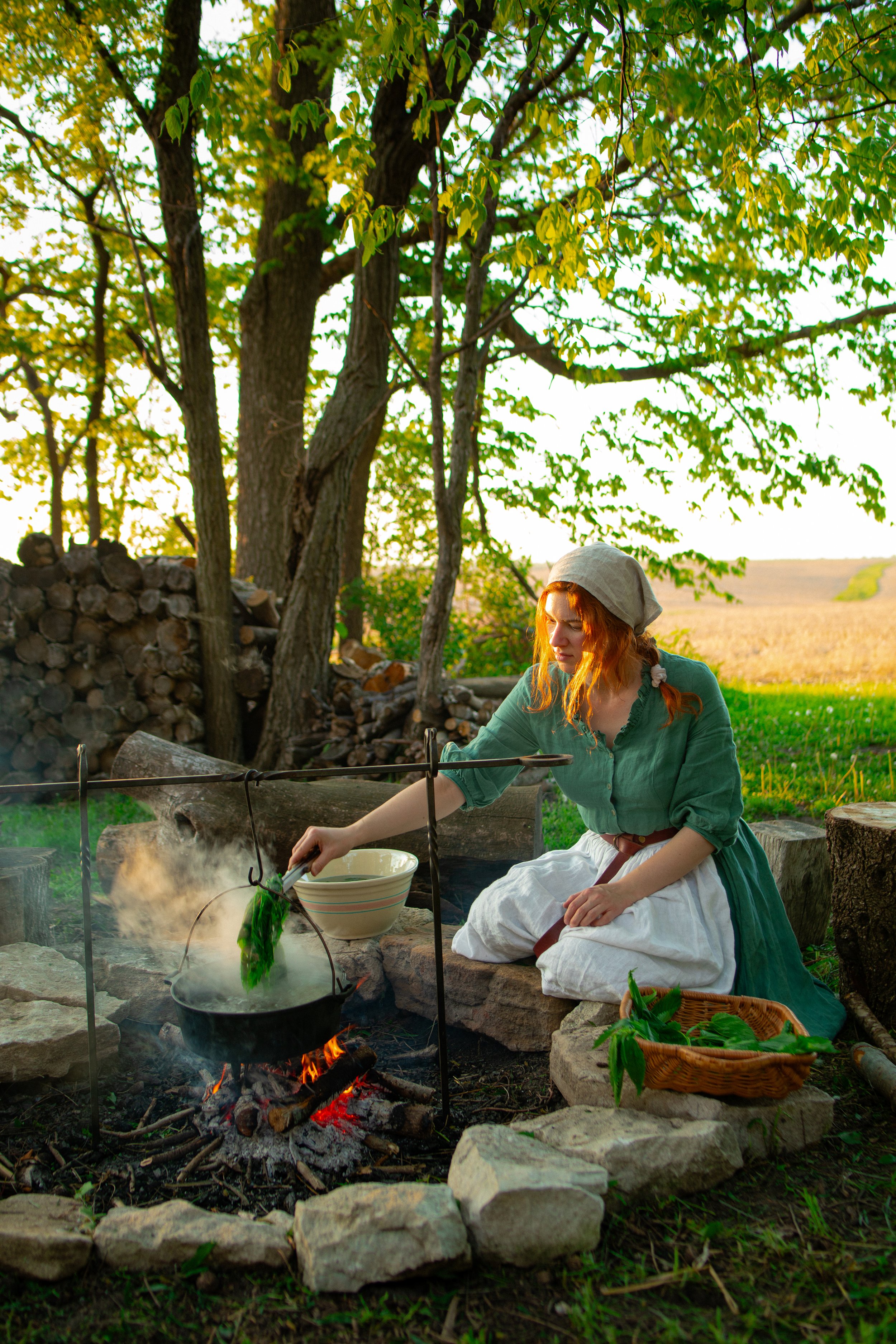The Ultimate Cozy Guide to Foraging for Stinging Nettles
This post may contain affiliate links, please see our privacy policy for more information.
Foraging for stinging nettles can be a bit intimdating, but with this easy guide, you will become skilled at collecting these beneficial plants for your kitchen in no time! When harvested with care, stinging nettles are easy to forage. Learn how to find, gather, and prepare this incredible wild plant for your own cozy cottage kitchen. Soon, you will be cooking and baking your own delicious dishes with the added benefits of stinging nettles.
what are stinging nettles?
Have you heard of stinging nettle? This wild growing plant has a long medicinal history and has been used to help cure ails in humans for hundreds of years. This plant was quite popular in the Middle Ages to cure joint pain and as a diuretic to cleanse the body of internal toxins. The only downside to this plant is that it is covered in little stinging hairs, which are irritating to the skin and can be downright painful. When they come in contact with your skin, they leave you feeling itchy, red, and can cause swelling - literally like a sting!
are stinging nettles good for you?
Even though they can be quite irritating to harvest if you do not where gloves, their sting is actually beneficial for your body! Scientists have studied that the stings from nettle actually decrease the original pain that they cause by reducing the levels of inflammatory chemicals in the body. They can also help to interfere with the way our bodies transmit those pain signals.
Stinging nettles were used historically to treat muscle and joint pain, eczema, arthritis, gout, and anemia. They contain the Vitamins A, C, K, and B vitamins. Stinging nettles are also full of beneficial nutrients such as calcium, iron, magnesium, phosphorus, potassium, sodium, amino acids, beta-carotene, carotenoids, polyphenols, fats, and more.
Stinging nettle supplements are used today for urinary tract infections, prostate health, hay fever, or in topical medication for muscle and joint pain, sprains, strains, tendonitis, and insect bites.
Please take any holistic medicine or herbal foraging advice with a grain of salt. I am not a trained herbalist and am only sharing my experiences as a hobbyist and Master Gardener. Always consult with your practitioner before working with foraged plants that you are not knowledgable on.
nettle folklore
Seeing as nettles have been used for centuries as a helpful cure for various ailments, it’s unsurprising that they can be found in folklore and stories that span several ages. Hans Christian Andersen, the famed author of The Little Mermaid and Thumbelina, mentioned nettles in his fairytale The Wild Swans. In the tale, the heroine must pick nettles in a graveyard by night. Then she must spin their fibers into yarn and knit the yarn into a coat. The coats will change her brothers, who were transformed into swans, back into men. The nettles sting and blister her hands, but the only way she can break the spell is if she finishes her task without making a sound.
Nettles in the Middle Ages were believed to help with hair growth and it was also used as a textile in Medieval Europe. In American Indian folklore, the nettle was associated with the coyote, as nettles and coyotes were considered natural tricksters.
identifying stinging nettle:
If you are becoming more interested in foraging for stinging nettle where you live, then you will want to look out for the identifying signs of this plant to make sure that you are harvesting the correct one! Always be cautious when foraging and do your research before harvesting and consuming plants that you do not know well. For a more professional guide, please read this article from Oregon State University.
Stinging nettle (Urtica dioica) can be identified most easily by the small fibrous hairs, or spines, growing on its stalk and the undersides of the leaves. It is a native perennial herb.
It has opposite growing heart-shaped leaves with serrated edges, like a saw, and it grows tiny green-ish flowers that bud from the stalk. The stems are square and are covered with small white hairs, or spines. The undersides of the leaves also grow these hairs, but the tops of the leaves do not. They are dark green in color and can grow between 3 to 7 feet tall.
where to find nettles:
Nettles are grown all over the world, though they tend to like places that are bit more shady. They often grow in streambeds, forest floors, and farmland. They are easy to grow from a cultivated seed in garden beds, and they spread through rhizomes or the dropping of their seed.
If you are hunting for nettle, you will tend to find them growing in lush patches, usually in a spot where other wild weeds are growing. They prefer more moist ecosystems, like a marsh or along a stream. The nettles on my farm grow in the shady area below our timber line where they stay cool and moist.
how to harvest nettles:
As with all foraged plants, it is best to gather nettles carefully and respectfully. Try your best to leave as little trace as possible and leave enough of the plant behind so that it may continue to grow and provide habitat and vegetation for local wildlife.
Once you have found and properly identified your nettles, it’s time to harvest them! The steps below will help you to learn the best practices to safely harvest nettles.
Harvest before flowers bloom. There is contradicting information on this fact, but I have found that it’s best to harvest nettles in the spring before they begin forming flowers or the flowers bloom, which is usually anywhere between June and August depending on where you live. For most plants, once their flowers bloom or go to seed, the leaves become bitter.
Where gloves and long sleeves. To gather nettles without being stung, it is best to wear gloves that are not penetrable, like rubber kitchen gloves or leather garden gloves. You may also want to wear long sleeves and long pants if you plan to really dig into the nettle patch.
Use scissors. I don’t recommend pinching back nettles as the hairs can still poke through your gloves and sting you. Bring along a pair of garden snips or sharp scissors to cut back the nettle stalks.
Gather in the morning. As with any other greens you may be harvesting, it’s best to clip nettles in the early morning when they are still tender.
Harvest the top 3 to 4 leaf sets. Cut the nettle stalk just below the third or fourth set of leaves. The tops are the most tender and best tasting, and this will allow the lower part of the plant to continue growing and bush out from its lower leaves. Do not dig up the nettles, ensuring that they can continue to grow!
how to store & preserve nettles:
After you have gathered your nettles, place them into a breathable container such as a woven basket or a paper bag. You will want to return them home as soon as possible to prevent them from wilting.
Once home, there are several ways that you can store your nettles for use in your kitchen. Read on to learn how to best preserve nettles!
BLANCHING nettles:
If you would like to cook with fresh nettles, it’s imperative that you blanch them first. The boiling process destroys the tiny stinging hairs, making them edible and safe to eat. Simply lift the nettles with a pair of tongs into a large boiling pot of water. Boil them for 3 to 4 minutes, then transfer them to a bowl of ice water for 1 minute to stop them from continuing to cook. Then, strain the nettles in a colander and squeeze out as much water as possible. Store the blanched nettles in a plastic bag in your refrigerator until ready to use. They should last for 3 to 4 days.
FREEZING nettles:
Blanch the nettles as stated above. Then, after draining, lay the leaves and stems in a single layer on a baking sheet. Place the baking sheet into the freezer and flash freeze the individual stalks until completely frozen, usually a couple of hours.
Then, remove the tray from the freezer and place the individual stalks into a freezer safe container. Label and date the container and store in your freezer until ready to use. The nettles should last this way for a year or longer.
drying nettles:
While you will want to blanch nettles to remove the stinging hairs for fresh eating, this is not necessary for drying nettles.
To dry nettles, wear a pair of gloves and simply rinse in cold water. Shake as much water from the leaves as possible.
Spread the leaves on a mesh drying rack or in a dehydrator in a single layer. Allow the leaves to sit in a place that is cool, dry, and out of direct sunlight. They should dry out fully within a few days. You can also hang dry nettles, which I share more tips for in this post.
When the nettles are fully dehydrated and no longer show signs of moisture, they can be stored in an airtight container in a cool, dark place such as pantry cabinet. The final dried leaves should still be a dark green and not brown or black.
cooking with nettles:
Cooking with nettles can be so much fun! There are so many ways that you can incorporate this beneficial herb into your diet. With dried nettles, they can easily be made into tea or used in sauces, stews, or as a little added herbal seasoning.
If you are working with fresh nettles, they can be made into soup, pesto, quiche, cake, pasta, and so many other wonderful recipes. If you would normally use a different green such as spinach or arugula, you can use nettles in place of that ingredient!
Here are some love nettle recipes from my blog:
Wild Nettle Pesto Spiral Babka
Leafhopper’s Nettle Loaf Cake
final thoughts:
I hope that you enjoyed this easy guide to foraging for stinging nettles! This native herb is full of wonderful medicinal benefits and has such a strong lore to it, which is something that I absolutely love learning about. While its no longer common to gather stinging nettles for use in the home, I think it is something that can be so wonderful to incorporate in a small way to connect with the people from the past who used to do the same. This cozy guide is meant to help take the pressure off of gathering and preserving wild foods, and I truly believe that even just gathering a few nettles for one small cup of tea is just as grand as storing enough to last you for the entire winter.
xoxo Kayla
more posts you might enjoy!
sources:
Two Burning Houses: A Natural History of Stinging Nettle; North Cascades Institute
The Folklore of Nettles; Terri Windling
Stinging Nettle; The Wildlife Trusts
6 Evidence-Based Benefits of Stinging Nettle; Healthline
Stinging Nettle; Mount Sinai
Wild Edibles: Stinging Nettle; Oregon State University


















